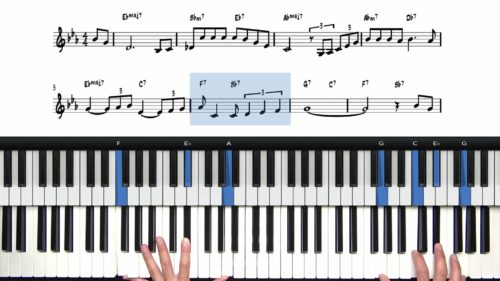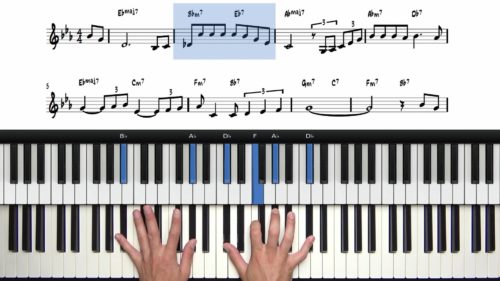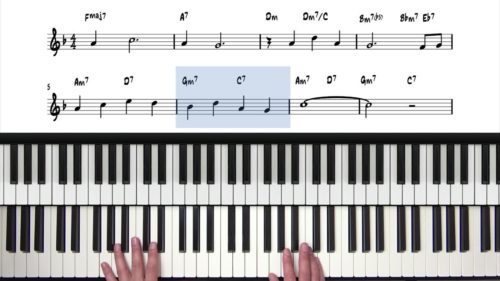Stride & Octave Melody
In this lesson we play the melody in octaves to command a bigger range of the piano. In the previous lessons we kept the melody in the range that it is originally written on the lead sheet. Whilst we can interpret the tune in this way, we do have other options to create a more dynamic performance particularly for the repeating A section.
Octave Melody & Ornamentation Tradeoff
Notice that when playing single note melody lines we can add embellishments and ornamentation such as turns, trills, and grace notes. When the melody is voiced in octaves we lose the facility to add these small embellishments.
This is the trade-off when choosing between these melodic styles. The octave melody will give you a bigger sound but the single note melody line will give you more opportunities to add melodic decoration and embellishments.
Practice Tips
-
Remember to practice slowly, focus on accuracy, and revisit these drills on our regular basis.
-
Mix and match single note melodies with octave melodies to create a more dynamic performance.
-
Experiment with tremolos on held notes when playing with an octave melody line. This works well in the turnaround section in bars 7 and 8 of the 1st A Section.








I know this tune from playing it in a recital when I first started leaning to play a jazz style. I haven’t progressed much with the stride voicings yet but I can still play the tune by memory using mostly spreads and a few shells.